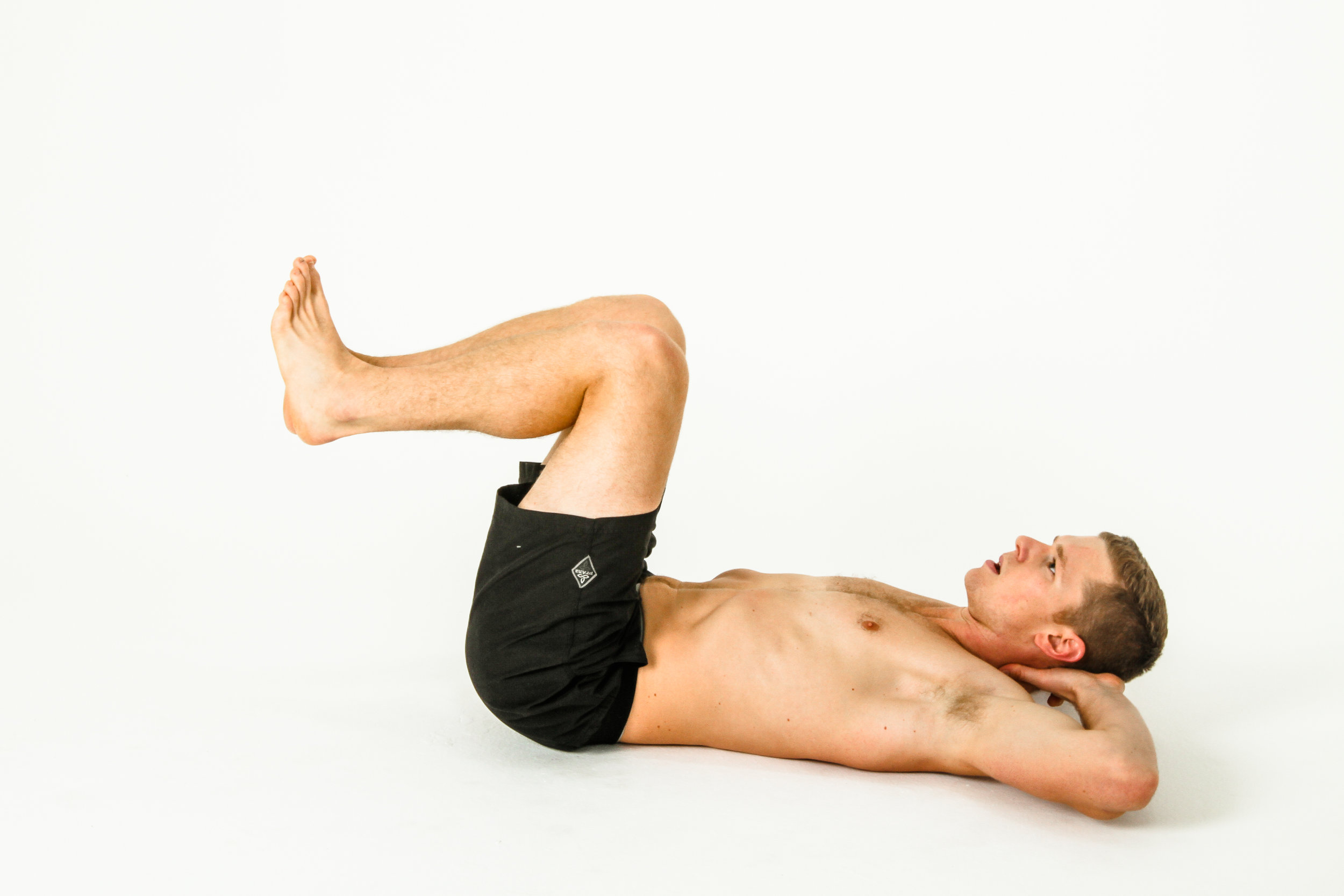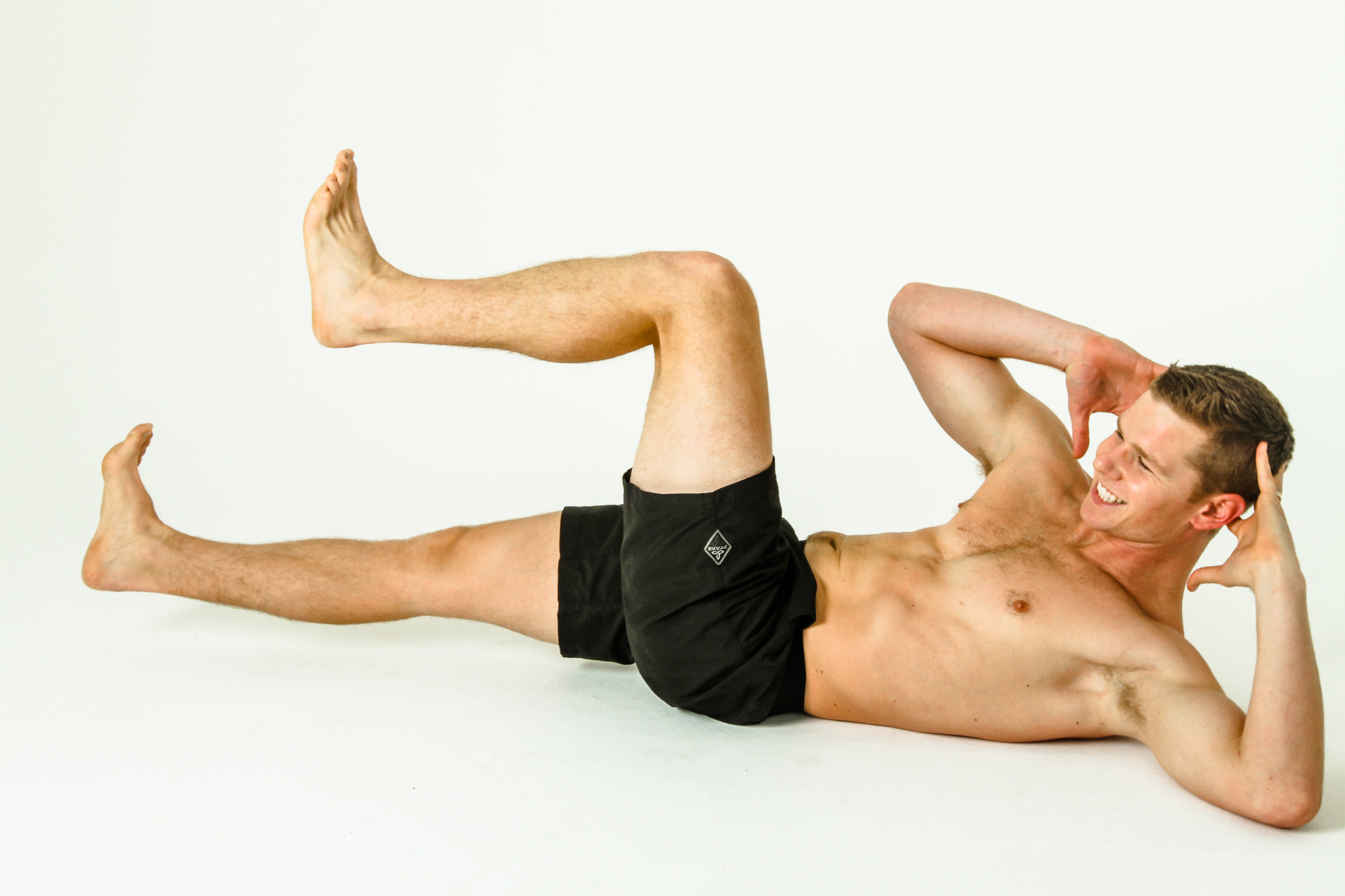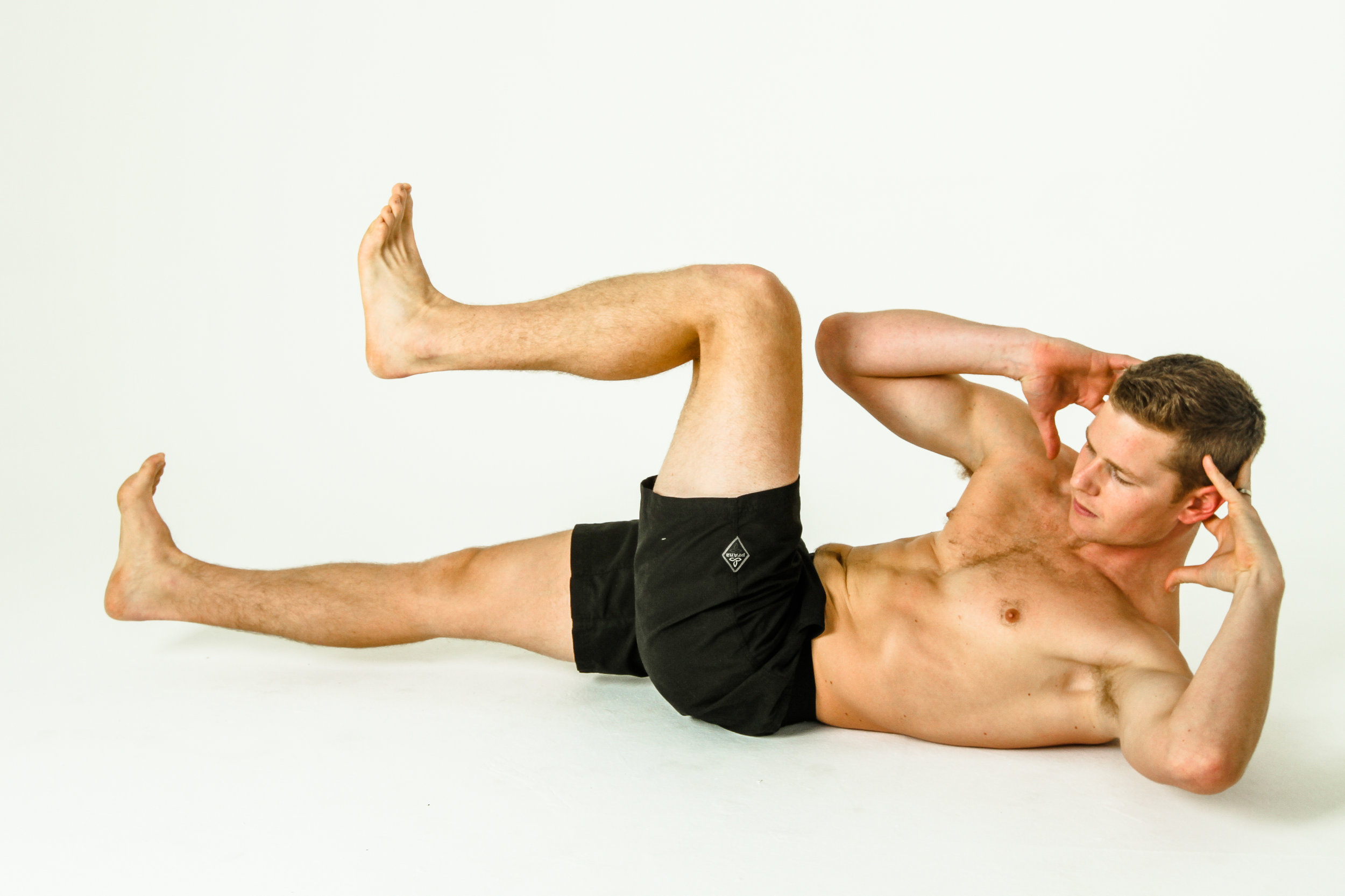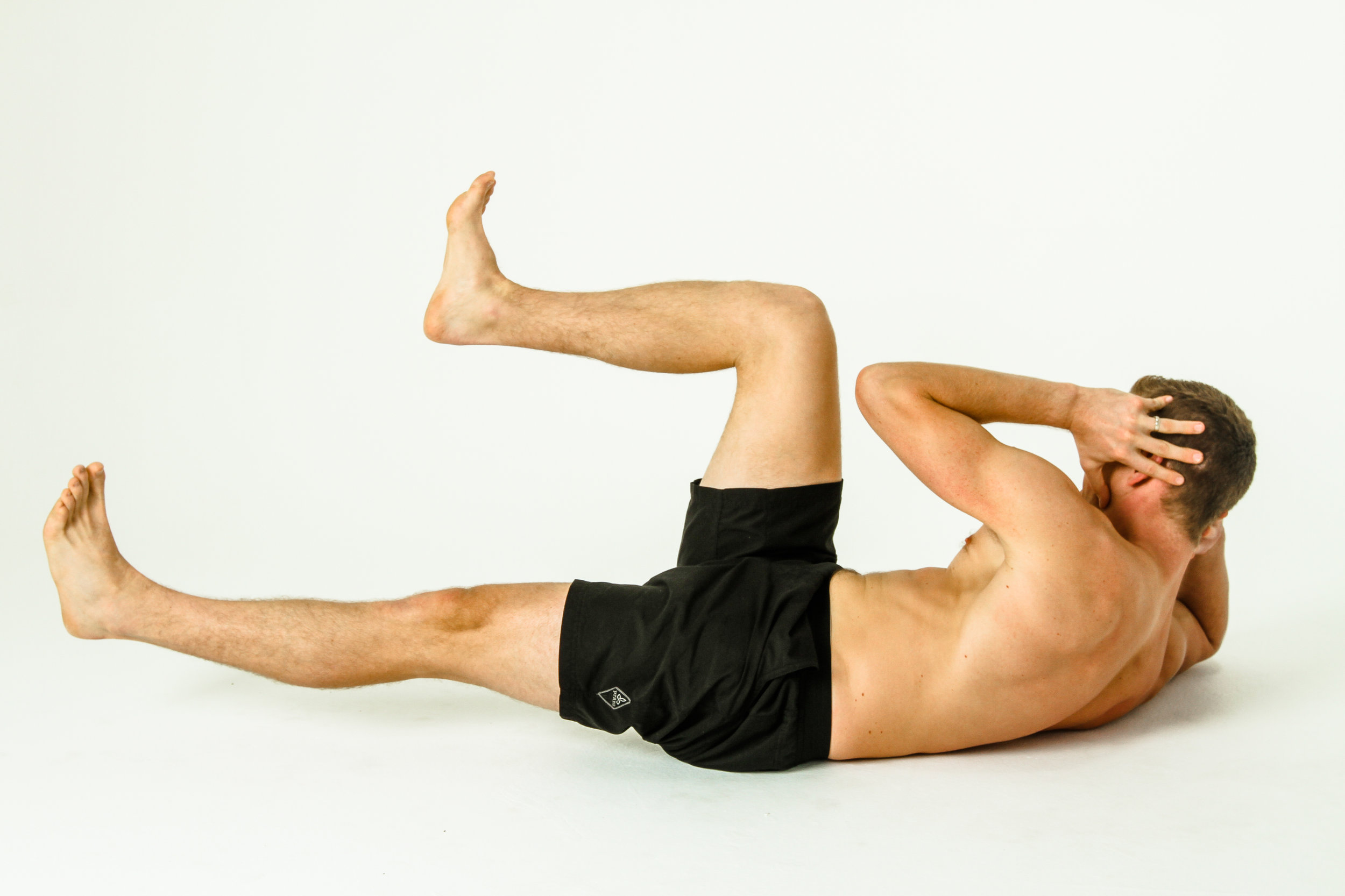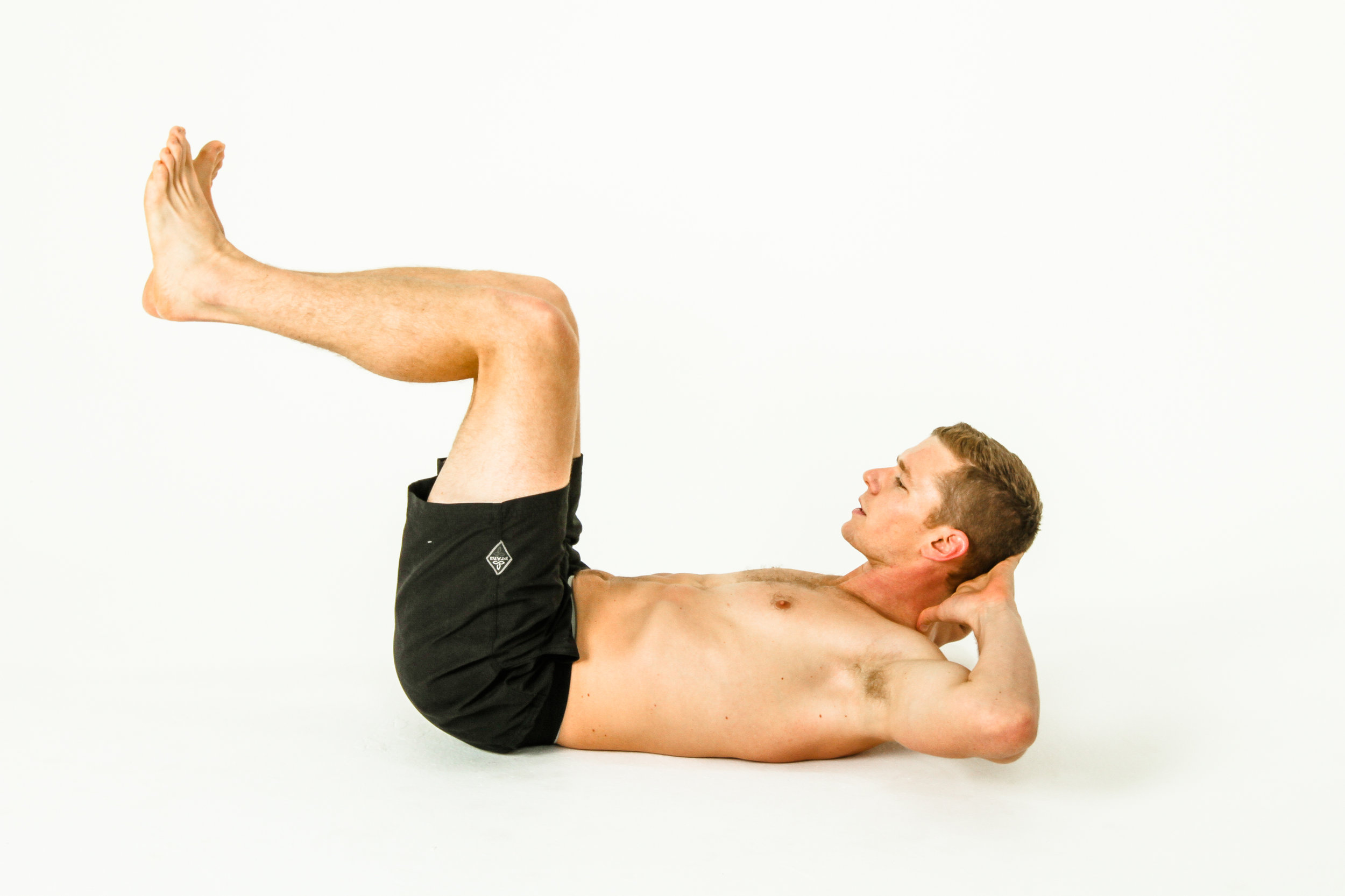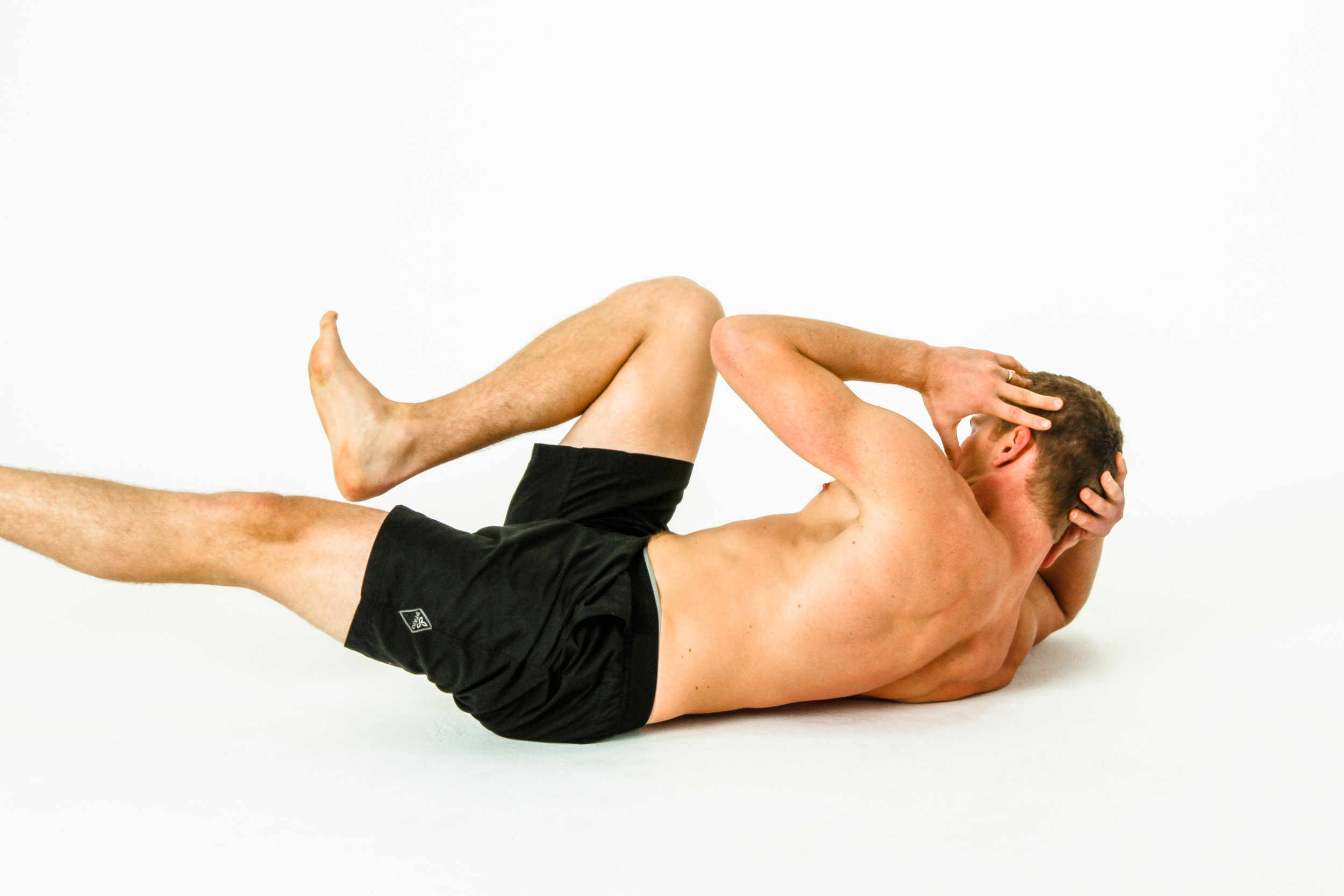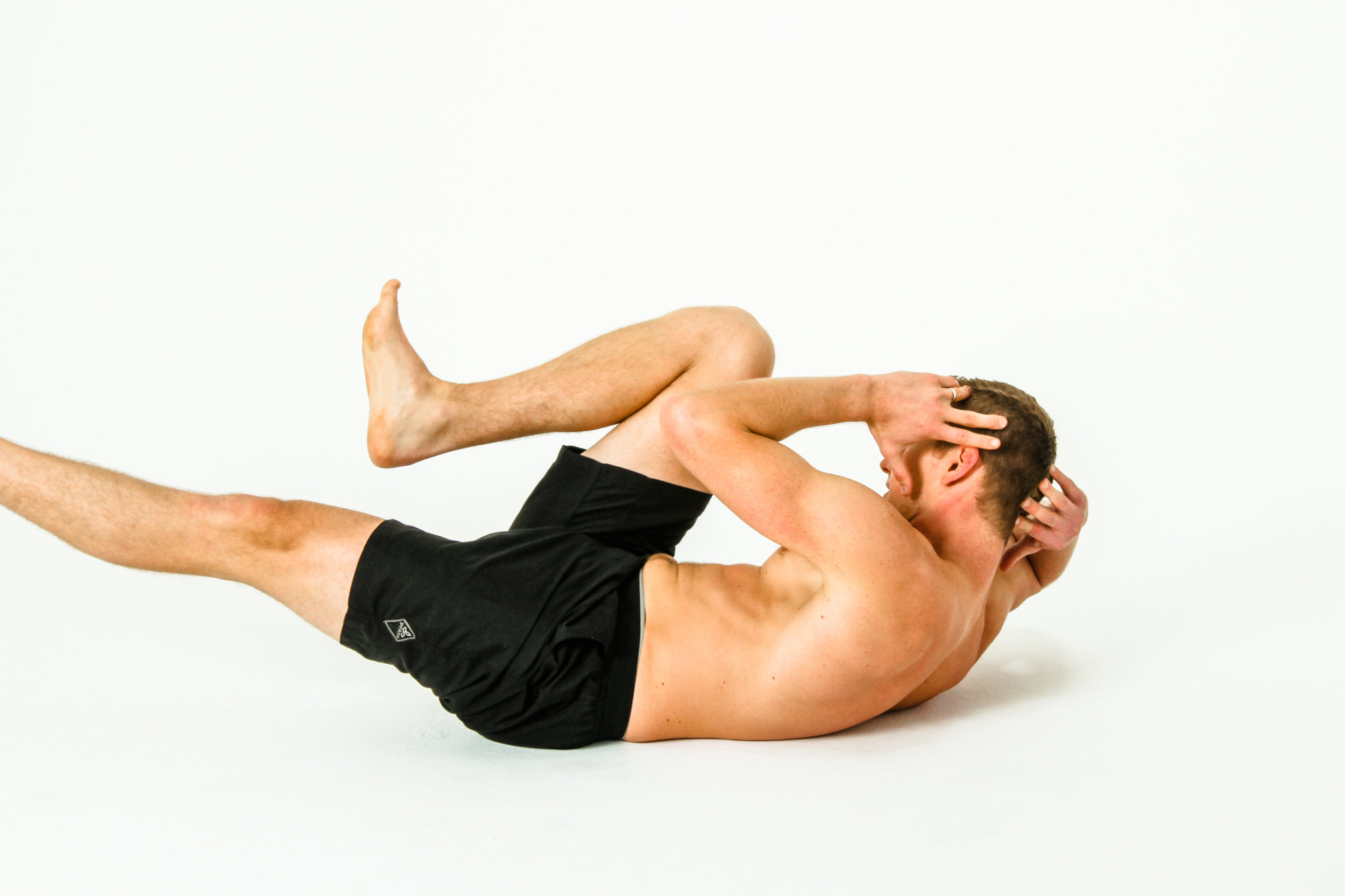Bicycle Crunches for Core Strength
Bicycle crunches are an effective exercise for targeting the lower and upper abdominals while working on disassociation between the torso and extremities. A 2001 study from Dr. Francis at San Diego State University found high EMG levels in both the obliques and rectus abdominus during the bicycle maneuver. While crunches are never my first choice of exercise when working with a patient, it is a good advanced exercise to prescribe as the patient is progressing through their plan of care. However, due to the complexity of the movement, it is easy to perform the bicycle crunch improperly. In this post, I will break down the subtle misalignments that may occur during bicycles.
PROPER BICYCLE CRUNCH FORM
To perform the movement correctly, start by creating tension in the Transversus Abdominus muscle (TrA). Lift each leg so that the knees are in line with the hips (approximately 90 degrees). As one leg extends, it is important to maintain the other leg at 90 degrees of hip flexion. Simultaneously, the torso should lift and twist bringing the elbow to the opposite knee. During the bicycle crunch, the hips should not flex past the naval and the neck needs to remain relaxed in the palms of each hand.
Key Points for Good Form:
Knees stack directly over the hips
Chin tucks
- Low back maintains a neutral curve
- Obliques and torso complete the movement without over-compensation from the shoulders
Improper Bicycle Crunch Form
When the core muscles cannot complete the movement, the body will use a combination of momentum, hip flexor strength, and chest/anterior neck strength to complete the movement. The most common substitution noted during the bicycle crunch is bringing the knee towards the chest as the opposite leg extends. This compensation occurs because the TrA and obliques cannot complete the movement. Instead of lifting the torso to the knee using the abdominals, the hip flexors bring the knee to the torso. This motion allows the abdominals to momentarily relax as the pelvis tips into a posterior tilt.
A common secondary misalignment is over facilitation of the anterior neck muscles. With this movement, the neck presses forward as the torso attempts to lift. Repetitively bringing the neck forward places extra stress across the neck and shoulders. Since the neck assists in flexing the torso, the rectus abdominus does not have to complete the movement.
Key Points for bad form:
- Chin protrudes forward with overuse of the anterior neck muscles
- Shoulders and elbows lead the movement with insufficient oblique activation
- Low back repeatedly flexes and extends as the legs move in and out
CLINICAL RATIONALE AND CORRELATION
The bicycle crunch is a dynamic whole body movement. To successfully complete the movement, one must have the ability to isolate different abdominal muscles while maintaining tension in the deep stabilizers. Additionally, the arms and legs must move independently of the torso. If the full bicycle is too demanding, I recommend decreasing the stability requirements by leaving the feet on the ground and only performing marching movements. A key aspect of the bicycle crunch is not losing activation of the TrA throughout the range of motion. If excessive lumbar flexion and extension is observed, return to more basic motor control and core strengthening exercises.
Jim Heafner PT, DPT, OCS

